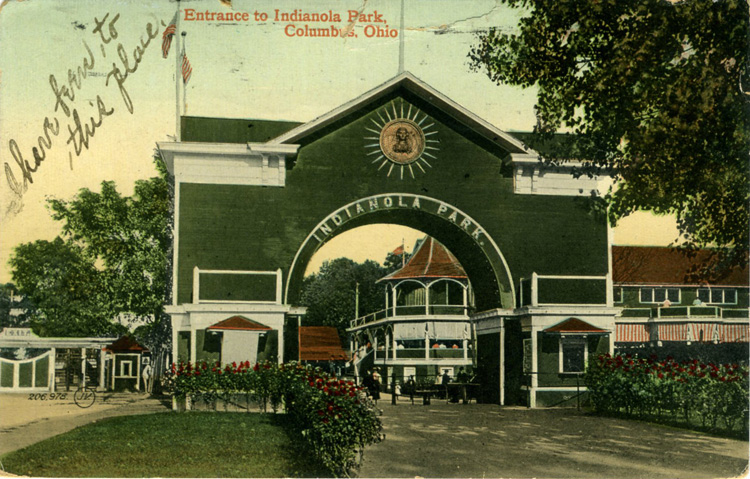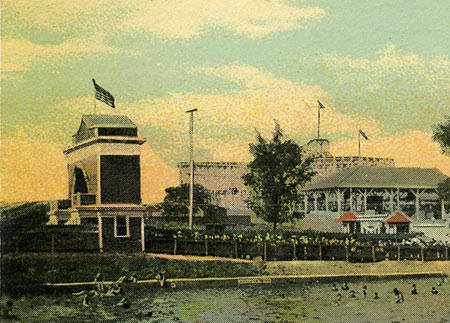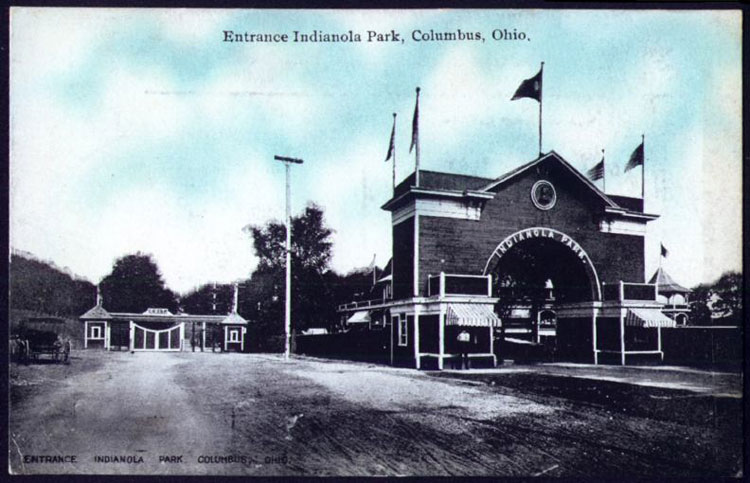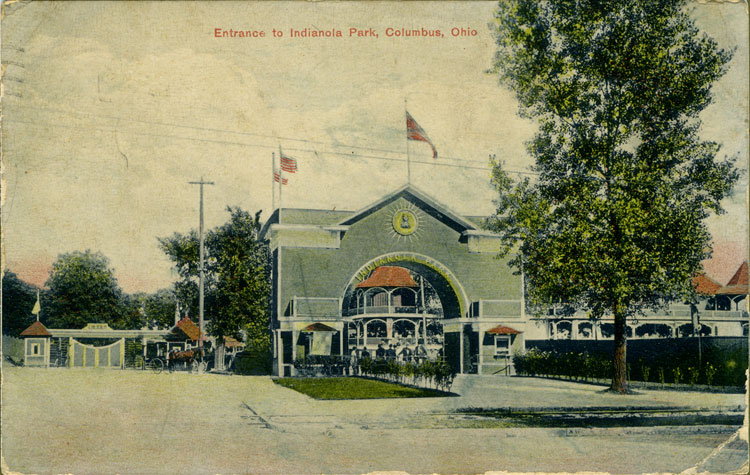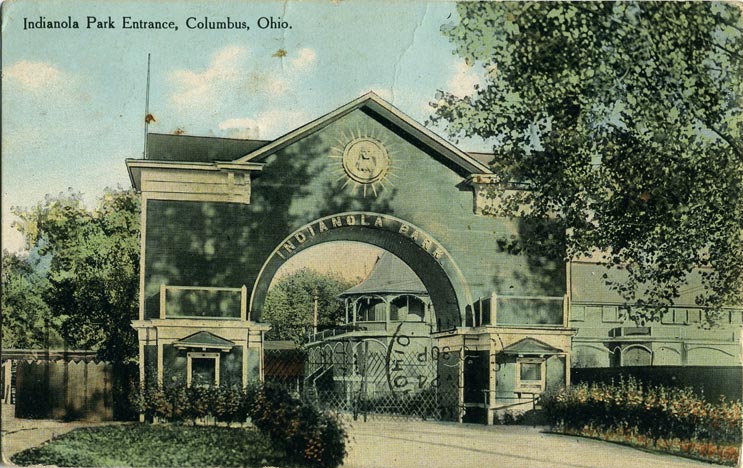
Indianola's entrance was on the west side of N. 4th St. at E. 19th Ave. Visitors entered the park through a great, 27 foot tall, wooden arch, festooned with flags, with ticket booths on either side. At night, lights traced out the arch and spelled out the name of the park. When the park opened in 1905, admission was 5¢--about a $1 in 2006 money. Children, accompanied by an adult, were usually free. Once inside the park, most of the attractions--the theater, the amusement rides, the pool, swimsuit rental, etc.--carried extra fees. |
|
A beautifully colored view of Indianola Park's entrance at N. 4th Ave. and E. 19th. "I have been to this place" reads the sender's note. |
|
|
Over the main entrance to the park was a medallion with the image of either an Indian princess or a feather-bonneted chief. (No picture I've seen is clear enough to tell which but I tend to think it's the princess.) In most photos, the medallion is surrounded by a sunburst. In the postcard below, it overlays crossed spears. Apparently, it changed a bit from season-to-season. A silhouette of a feather-bonneted Indian warrior often appeared as a sort of park logo on flags, banners, uniforms, and swimsuits. Other than these exceptions, Native American imagery and themes never figured much in the park's promotions or advertising. Left: Side view of the park entrance from a 1908 postcard. |
A very early image of entrance at Indianola Park. Note the horse-drawn buggy and the bare ground.
Another early view of Indianola's entrance. Note the streetcar tracks between the sidewalk and N. 4th St. |
|
Indianola Park took its name from the Indianola Summit real estate development of which it was a part. Indianola Summit, in turn, took its name from Robert Neil's nearby 1860s mansion. In the 19th Century, the Neil family owned most of the land that north Columbus would one day be built upon. Indianola Park, Indianola Summit, and the Ohio State University campus all occupied land that was once the Neil farm The family seat was a house called Indianola (still standing at 1842 Indianola Ave). Supposedly, the house aquired its name because it had been built on an ancient Indian burial mound. Indian + knoll = Indianola. |
|
Closer view of this popular subject. Taken a bit later than the ones just above. Notice how the bushes and tree have grown. |
|
![]()
